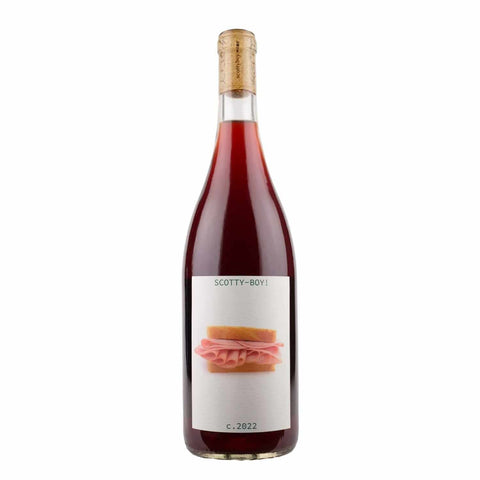4 of 41 products
Glou glou natural wine refers to light, easy-drinking, and highly quaffable wines, typically made with minimal intervention and low alcohol content. The term, derived from the French onomatopoeic word for "glug-glug," captures these wines' fun, refreshing, and fruit-forward nature, making them perfect for casual drinking. Glou glou wines are served slightly chilled and are usually quite affordable!
4 of 41 products
In recent years, the world of wine has embraced a growing trend towards natural, easy-drinking, and lower-alcohol wines, often described by the term “glou glou.” This playful term, derived from the French sound for gulping or “glug-glug,” perfectly encapsulates the essence of these wines: fun, refreshing, and irresistibly drinkable. But beyond the appeal of easy drinking, low-alcohol wines offer a balance of flavor and moderation that resonates with modern wine lovers. In this essay, we’ll explore the concept of glou glou wine and delve into the winemaking techniques that make low-alcohol wines possible.
Glou glou wines are part of the broader category of natural wines, which prioritize minimal intervention, sustainability, and a more expressive connection between the grape, terroir, and the winemaking process. These wines typically feature:
The style encourages wine enthusiasts to enjoy wine in a carefree, communal way—more about the joy of drinking than the prestige often associated with more traditional bottles. You’ll often find these wines served chilled, adding to their vibrant, thirst-quenching quality.
Low-alcohol wine goes beyond a trend; it’s a reflection of changing consumer preferences. With more people seeking out health-conscious choices, winemakers are responding by crafting wines with reduced alcohol levels without sacrificing taste or complexity. Let’s look at the techniques winemakers use to create these wines.
One of the most common methods for producing low-alcohol wine is harvesting the grapes earlier than usual. Grapes ripen over time, accumulating sugars that eventually convert into alcohol during fermentation. By picking the grapes earlier in the season, when sugar levels are lower, winemakers naturally limit the potential alcohol content.
This method is particularly effective in cooler climates, where the growing season is shorter and the grapes tend to ripen more slowly. It preserves high acidity and bright fruit flavors, which are key characteristics of many low-alcohol wines. Early harvesting is often employed in the making of Riesling or Vinho Verde, both celebrated for their lower alcohol content and crisp freshness.
Certain grape varieties are more naturally inclined to produce wines with lower alcohol levels. For instance, Muscadet, Cortese, and Fiano are often found in lighter, low-alcohol expressions. These grapes, particularly when grown in cooler climates, have a tendency to ripen with lower sugar levels.
In the case of glou glou wines, you’ll frequently find varietals like Gamay, Cinsault, and Carignan, which can maintain vibrant fruit flavors at lower alcohol concentrations.
Another technique winemakers use to reduce alcohol content is arrested fermentation, where the fermentation process is intentionally stopped before all the sugars are converted into alcohol. This can be achieved by cooling the wine or adding sulfites to halt the yeast activity. The result is a lower-alcohol wine with a touch of residual sweetness, often seen in Moscato d'Asti or German Kabinett Rieslings.
This method preserves some of the grape’s natural sweetness and maintains the wine’s balance, making it light and enjoyable without the heaviness associated with higher alcohol levels.
In some cases, winemakers may blend a base wine with unfermented grape juice or a low-alcohol wine, diluting the final alcohol content. This approach helps maintain balance and can soften the overall taste, leading to a more approachable wine that still carries vibrant fruit notes.
The shift toward lower-alcohol wines aligns with broader lifestyle trends favoring wellness and moderation. Wine enthusiasts who enjoy glou glou or low-alcohol options often highlight benefits such as:
Glou glou and low-alcohol wines embody the spirit of fun, accessibility, and moderation. Whether through natural methods like early harvesting and selecting specific grape varieties or modern techniques such as reverse osmosis, winemakers have embraced the challenge of producing wines that offer complexity without excess alcohol. As consumer preferences evolve, the popularity of these wines is only set to grow, with more and more people seeking out the light, fresh, and vibrant flavors that define the glou glou style.
Primal Wine is an award-winning natural wine shop where you can buy some of the best natural wine online. We also curate a selection of classic wine from Italy, France, Germany, and Spain. Make sure you visit our website often, we are constantly adding exciting new wines to our selection.
123 John Doe Street
Your Town, YT 12345
Store Hours
Sun: Closed
Mon-Fri: 9:00 - 17:00
Sat: 10:00 - 13:00
What to expect at pickup
Closed
Closing at 5pm
Closing at 5pm
Closing at 5pm
Closing at 5pm
Closing at 5pm
Closing at 1pm




